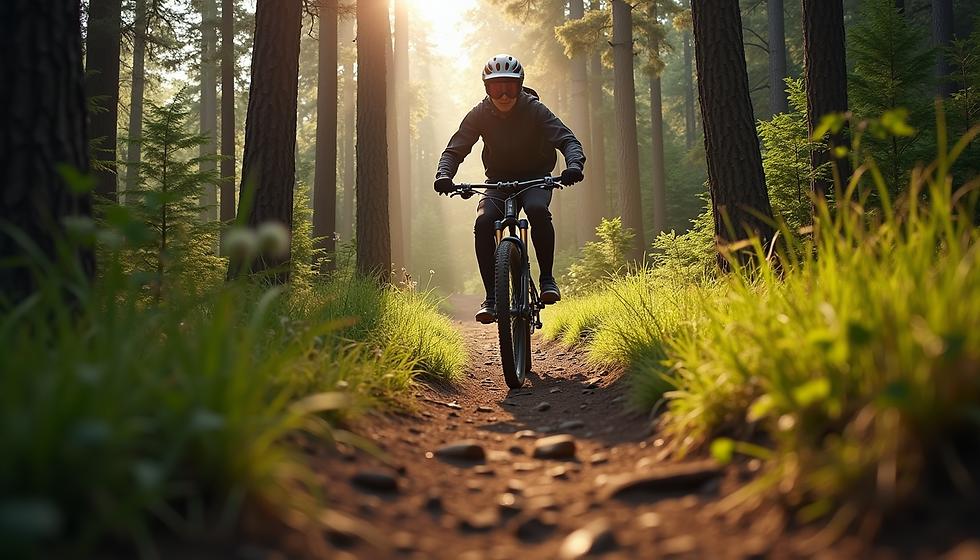Fresh Goods: Understanding New Technology. A Look at Schwalbe Radial Sidewall Tires
- kelly jorgensen
- Jan 23
- 2 min read
What is the deal with the new Schwalbe Radial Sidewall Tires and what's the advantage or disadvantage?
Let's dive in and see what's up with the Schwalbe Radial Sidewall MTB Tires.

RADIAL TIRE TECHNOLOGY
The basis for radial tires is the completely rethought construction of the carcass. The carcass threads, which run diagonally across the tire at a 45° angle in conventional bicycle tires, are arranged at a much more obtuse angle in Schwalbe's radial tires. This technology opens up a completely new dimension in the function of bicycle tires.
ADVANTAGES OF RADIAL
Carcass threads at a more obtuse angle than other tires
30% more contact area with the same air pressure
More grip, more damping, more control
DISADVANTAGES OF RADIAL
Higher rolling resistance
MORE CONTACT PATCH, MORE GRIP
Due to the blunter angle of the carcass threads, the tire can deform more selectively. As a result, it follows bumps many times better than a bias-ply tire and always maintains contact with the ground. The result: more grip, more comfort and more control off-road. In addition, the contact area increases by approx. 30% with the same air pressure.

DIFFERENCE BETWEEN BIAS-PLY AND RADIAL TIRES
In a bias-ply tire, the threads of the carcass lie at a 45° angle to the direction of travel. This is the standard construction method for bicycle tires. In radial tires, on the other hand, the threads lie at a 90° angle, but require a so-called belt under the tread. Schwalbe radial tires have a much more obtuse angle than conventional cross-ply tires, but do not require a belt.

WHO IT'S FOR
My thoughts are that radial tires will be for those who don't mind a bit more rolling resistance in trade for more traction. In other words if you aren't cross country racing and just generally riding trails or enduro or downhill radial sidewalls are likely for you. This is why you most likely are not seeing radial sidewalls on any of Schwalbe's cross country tires.
You can find Schwalbe's new radial mtb tires at Jenson USA.




Comments